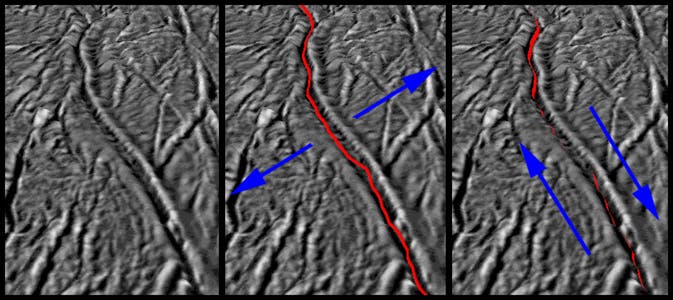Images from NASA’s Cassini spacecraft have enabled scientists for the first time to create a correlation between spraying of jets of water vapor from fissures on Saturn’s moon Enceladus with Saturn’s gravity and the way it creates stress on the fissure.
“This new work gives scientists insight into the mechanics of these picturesque jets at Enceladus and shows that Saturn really stresses Enceladus,” said Terry Hurford, a Cassini associate based at NASA Goddard Space Flight Center in Greenbelt, Md.
Enceladus is really unique in the Saturn system, and in our solar system of that matter – jets of water and organic matter spray out from long fissures from its south pole. The long fissures have been nicknamed ‘tiger stripes’. Hurford and colleagues suggested a few years ago that these tiger stripes might have been caused by tidal pulls from Saturn – much like the way the Moon causes oceanic tides here on Earth, coming to this conclusion after noticing that the greatest stress on the tiger stripes occured when Enceladus was closest to Saturn; they could found that the planet’s gravitational pull might also deform the fissures by relative deformation: making one side move with respect to the other.
However, if this would be the case, a planetary or local ocean would be required in order to allow Enceladus to flex enough to generate stresses great enough to deform the surface, so this is quite a big claim.
“Cassini’s seven-plus years roaming the Saturn system have shown us how beautifully dynamic and unexpected the Saturn system is over time,” Spilker said. “We’re looking forward to new discoveries as the seasons turn.”
Via NASA










